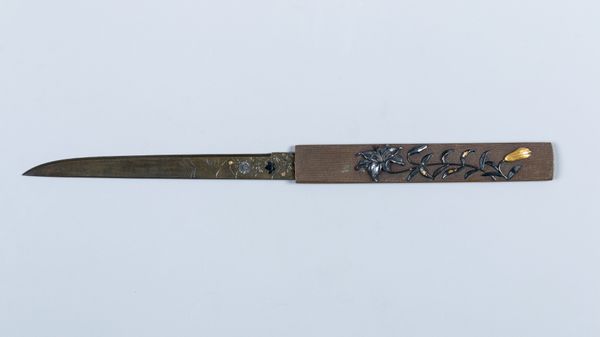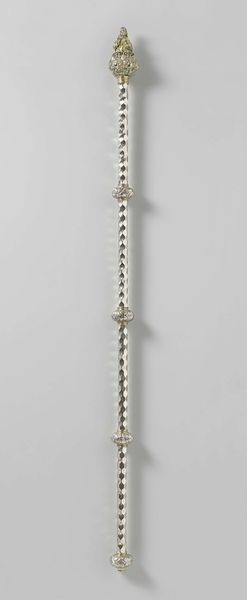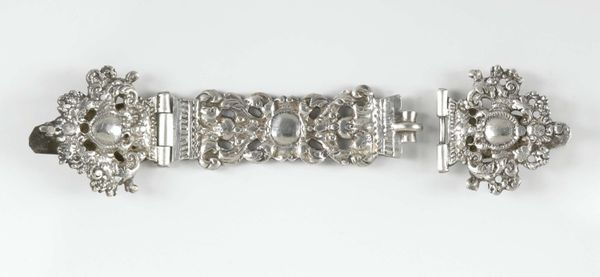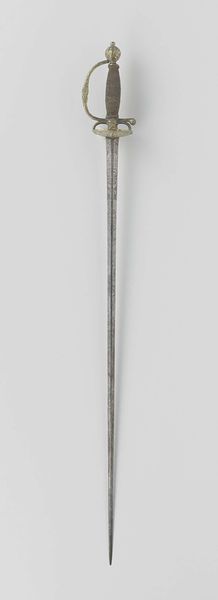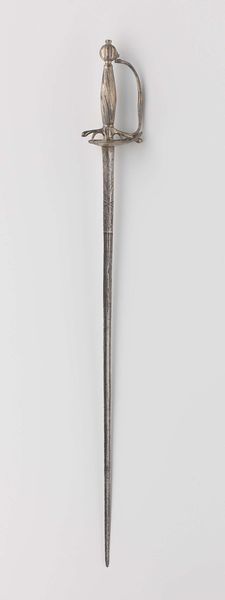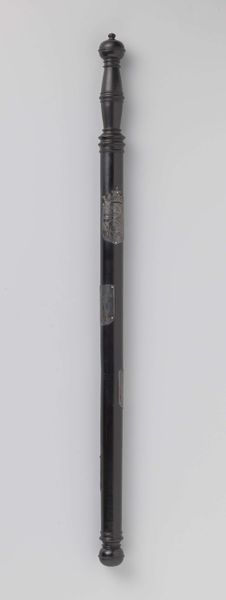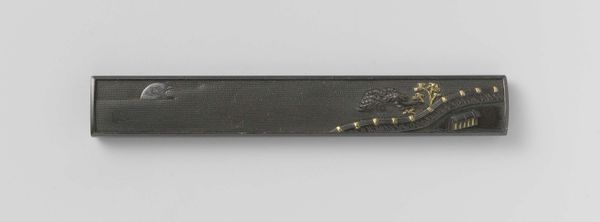
metal, sculpture
#
baroque
#
metal
#
sculpture
#
sculpture
Dimensions: length 152.3 cm, length 114.8 cm, diameter 18.2 mm, weight 5.2 kg
Copyright: Rijks Museum: Open Domain
Curator: What a dazzling object! This flintlock musket from before 1699, now in the Rijksmuseum collection, stops me in my tracks with its visual impact. Editor: My first impression is conflict, almost a grotesque contradiction—a weapon designed for violence adorned with such delicate ornamentation. It's like putting lipstick on a killer. Curator: That contradiction is exactly what makes it fascinating! Let's delve into its materials. The musket itself is constructed from metal, expertly crafted and engineered. Then you have this applied ornamentation... look at the details, perhaps pearl or mother-of-pearl inlaid on the butt of the gun. It's a stunning example of the baroque period. Editor: Agreed, and this juxtaposition of luxury with utility prompts consideration. Who would have commissioned or used such a thing? It forces us to contemplate the power dynamics and social stratification present in the era. How might class, race, and gender be intertwined with objects that project an ideal? Curator: Exactly! Consider the labor involved in both the manufacturing of the musket itself and the intricate ornamentation. The skills of metalworkers and jewelers coming together. Where did the pearls originate? What supply chains were in place? There are so many connections that exist to the materials. Editor: It's crucial to analyze how the opulence performs as an aesthetic that legitimizes and reinforces unequal power relations, especially in warfare and conquest. It turns the gaze towards the hidden cost of domination disguised behind embellishments. Curator: The care and expertise in producing such an object highlight the craft and ingenuity present during this period. Often overlooked due to emphasis on painting and monumental architecture, smaller, functional artworks also show a range of material knowledge. Editor: Well said, as scholars we cannot assume all functional artwork lacks intention, but we must also remember how intertwined violence and aesthetics are—that this history of oppression continues to be recontextualized as heritage today. Curator: True, the muskets place in history, the violence they perpetuated, as well as the mastery of its creators, are held in precarious tension. I will keep contemplating this juxtaposition. Editor: Likewise, examining our historical relics can help us look to creating more equitable and ethical designs and materials, and uses, in the future.
Comments
No comments
Be the first to comment and join the conversation on the ultimate creative platform.


